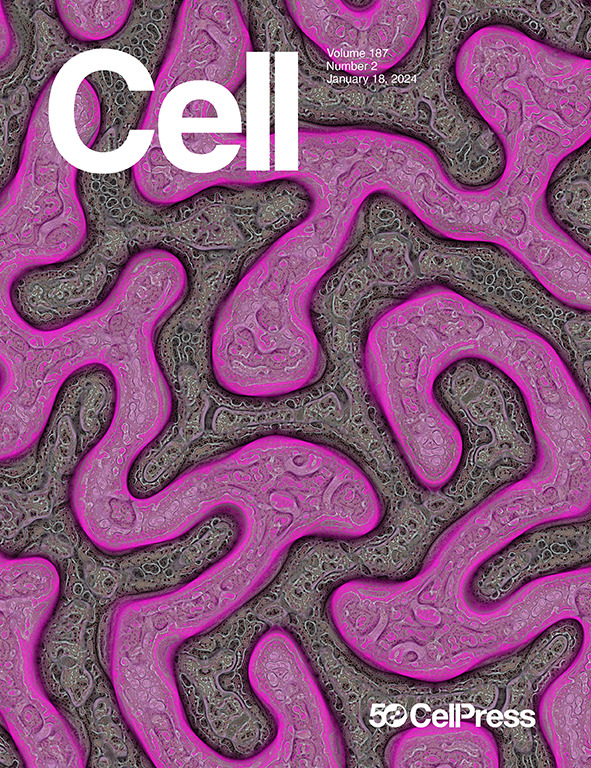Cross-organ metabolite production and consumption in healthy and atherogenic conditions
IF 42.5
1区 生物学
Q1 BIOCHEMISTRY & MOLECULAR BIOLOGY
引用次数: 0
Abstract
Mammalian organs continuously produce and consume circulating metabolites for organismal health and survival. However, the landscape of this fundamental process and its perturbation by diet and disease is unknown. Using arteriovenous metabolomics, tissue transcriptomics, and hormone arrays in multiple pathophysiological conditions in pigs, we generated an atlas of 10 cross-organ metabolite production and consumption during fasting/feeding, Western diet, and cardiovascular disease progression induced by low-density lipoprotein receptor (LDLR) deficiency. We discovered numerous instances of feeding-dependent and -independent metabolite production and consumption by organs and proposed mechanisms by which these are disrupted by Western diet via altered metabolite concentration gradients and hormones. Both Western diet and LDLR deficiency trigger the release of bile acids (BAs) by extra-hepatic organs, likely contributing to abnormally elevated circulating BA levels and consequent vascular inflammation and atherosclerosis development. These resources reveal intricate inter-organ metabolic crosstalk across pathophysiological conditions, offering biochemical insights into diet effects and cardiometabolic diseases.

健康和动脉粥样硬化条件下跨器官代谢物的产生和消耗
哺乳动物的器官不断产生和消耗循环代谢物,以维持机体健康和生存。然而,这一基本过程的景观及其受饮食和疾病的干扰是未知的。利用动静脉代谢组学、组织转录组学和多种病理生理条件下的激素阵列,我们绘制了10种跨器官代谢物的产生和消耗图谱,包括禁食/饲养、西方饮食和低密度脂蛋白受体(LDLR)缺乏引起的心血管疾病进展。我们发现了许多器官产生和消耗代谢物依赖和独立的例子,并提出了西方饮食通过改变代谢物浓度梯度和激素破坏这些代谢物的机制。西方饮食和LDLR缺乏都会触发肝外器官释放胆汁酸(BAs),可能导致循环BA水平异常升高,从而导致血管炎症和动脉粥样硬化的发展。这些资源揭示了病理生理条件下复杂的器官间代谢串扰,为饮食影响和心脏代谢疾病提供了生化见解。
本文章由计算机程序翻译,如有差异,请以英文原文为准。
求助全文
约1分钟内获得全文
求助全文
来源期刊

Cell
生物-生化与分子生物学
CiteScore
110.00
自引率
0.80%
发文量
396
审稿时长
2 months
期刊介绍:
Cells is an international, peer-reviewed, open access journal that focuses on cell biology, molecular biology, and biophysics. It is affiliated with several societies, including the Spanish Society for Biochemistry and Molecular Biology (SEBBM), Nordic Autophagy Society (NAS), Spanish Society of Hematology and Hemotherapy (SEHH), and Society for Regenerative Medicine (Russian Federation) (RPO).
The journal publishes research findings of significant importance in various areas of experimental biology, such as cell biology, molecular biology, neuroscience, immunology, virology, microbiology, cancer, human genetics, systems biology, signaling, and disease mechanisms and therapeutics. The primary criterion for considering papers is whether the results contribute to significant conceptual advances or raise thought-provoking questions and hypotheses related to interesting and important biological inquiries.
In addition to primary research articles presented in four formats, Cells also features review and opinion articles in its "leading edge" section, discussing recent research advancements and topics of interest to its wide readership.
 求助内容:
求助内容: 应助结果提醒方式:
应助结果提醒方式:


